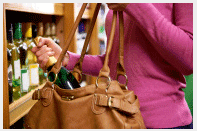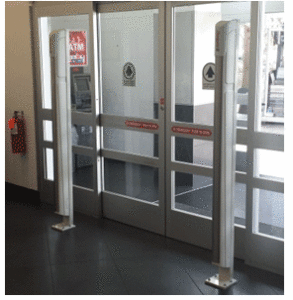 Sometime this year you will most likely be conducting an inventory. Some stores even conduct multiple inventories when they have high stock shortage results. While it does not necessarily translate to poor results, a lack of adequate preparation can have an impact on the final shortage numbers. Occasionally, it is easy to overlook things that can cause an unnecessary stock shortage. Here are some things to look at as you prepare for your next store inventory that may prove helpful in obtaining the best possible results:
Sometime this year you will most likely be conducting an inventory. Some stores even conduct multiple inventories when they have high stock shortage results. While it does not necessarily translate to poor results, a lack of adequate preparation can have an impact on the final shortage numbers. Occasionally, it is easy to overlook things that can cause an unnecessary stock shortage. Here are some things to look at as you prepare for your next store inventory that may prove helpful in obtaining the best possible results:
- If you have shoplifting or employee theft cases you are prosecuting you need to account for the merchandise. A Loss Prevention Department should have an evidence locker with recovered merchandise in it if a case has not come to trial yet. Some police departments retain the evidence and supply a chain of custody form that lists the merchandise they are holding. Ensure the evidence, in either case, is included in your inventory. It may not seem like a lot but if you are the owner of a small or medium retail business a few hundred dollars here and there can be a big deal.
- Look underneath and behind fixtures or cases that may have gaps where merchandise can drop. It does not always occur to people to look under register scan belts but small pieces of merchandise can be pulled in as the belt rolls. Items such as greeting cards and jewelry can find their way underneath and will be missed during a count.
- Check-in desk drawers and in offices for merchandise being used for store purposes. There are at times a need to “store use” merchandise such as pens, trash bags, tape, etc. These should be marked with some type of marker or tag to show that they have been accounted for at some point. If an item is not marked out for store use and is not counted during the inventory process it becomes a shortage.
- Take a look at the sales floor and if your store uses gondolas and shelving for displaying merchandise, lift up baseplates of the gondolas and look for stray merchandise. If you look closely there is a gap between the base of the gondola and the pegboard wall. Small items can find the way down these nooks and crannies. It should also be noted that shoplifters and dishonest employees will hide merchandise under here on occasion.
- If your store sells purses, luggage, diaper bags, etc. unzip them and look inside for merchandise that has been concealed. It is not unusual for a shoplifter to hide merchandise inside and get scared away leaving the hidden items behind.
- If your store sells live units used as displays, be sure they are tagged and ready to be counted. On the flip side of that be sure inactive or non-functional displays are tagged as DNI (Do Not Inventory). These types of displays are often in housewares and may include microwave ovens, blenders, coffee makers, etc. In electronics, it could be a printer, computer, phone and so on.
- Ensure furniture units that may be sold as two separate pieces are counted properly. For example, a desk may have a hutch attached to it on display but the hutch and desk are two unique sku’s.
- Check that all case packs are separated appropriately for sale and counting. For example, I work in a store that sells individual binders and 12 pack cases of binders (each of the binders in the case has a barcode but are intended for sale as part of the case). Be sure your merchandise is counted in the appropriate quantity it is to be sold in.
- Minimize your pre-counts. Some stores will spend an excessive amount of time counting merchandise that they are paying an inventory service to count. These companies are very good at what they do. Have a pre-inventory visit with the representative of the inventory crew and discuss areas that might best be pre-counted but get their input. If they are confident they can count everything allow them to do so. You should be auditing the work on inventory night and catching significant mis-counts.
Hopefully, you have been using Checkpoint equipment to minimize losses due to theft. It is also going to be beneficial to your stock shortage dollars and percent if you have had sound operational plans in place including vendor controls. The last piece to the shortage puzzle is the inventory itself. Follow these suggestions and you can rest easy knowing you have done all you can to improve your chances for a great inventory number for the year.

 A Target or Walmart store can and are able to fight shoplifting in their stores every day of the year.
A Target or Walmart store can and are able to fight shoplifting in their stores every day of the year. Hopefully, your store is one of those places where employees look forward to coming to work. You know what I’m talking about it’s that environment where everyone is happy to be there. Employees know they are there to get a job done and take pride in the service they offer to the customers. It’s the type of job where people may have an off day but their co-workers are supportive and help pick them up. It happens to all of us. These jobs have a manager who interacts with the employees and takes a real interest in each of them. The boss may take time to say hello and greet everyone. They know their employees by name and may even know their families. Unfortunately, not every workplace has such a camaraderie amongst the team members. There is any number of reasons this can happen but a major contributor to an unhappy workplace can be the hiring of an employee with a poor attitude.
Hopefully, your store is one of those places where employees look forward to coming to work. You know what I’m talking about it’s that environment where everyone is happy to be there. Employees know they are there to get a job done and take pride in the service they offer to the customers. It’s the type of job where people may have an off day but their co-workers are supportive and help pick them up. It happens to all of us. These jobs have a manager who interacts with the employees and takes a real interest in each of them. The boss may take time to say hello and greet everyone. They know their employees by name and may even know their families. Unfortunately, not every workplace has such a camaraderie amongst the team members. There is any number of reasons this can happen but a major contributor to an unhappy workplace can be the hiring of an employee with a poor attitude. C
C

 After the holidays, you probably have a whole array of chores you must do to decide whether you had a good or bad year. The holidays are behind us, and if you seem eager to have new strategies to put in place, it is not uncommon, and you are not alone. New year resolutions are abundant during this time of year, and even though many of them are related to exercise, eating and health issues, yours can be directed completely to the business side of your life.
After the holidays, you probably have a whole array of chores you must do to decide whether you had a good or bad year. The holidays are behind us, and if you seem eager to have new strategies to put in place, it is not uncommon, and you are not alone. New year resolutions are abundant during this time of year, and even though many of them are related to exercise, eating and health issues, yours can be directed completely to the business side of your life. With darker daylight hours comes the need for more coffee, the use of lights earlier and a plan to keep crime away from your store or business. Have you considered that one of the following types of crime could affect you?
With darker daylight hours comes the need for more coffee, the use of lights earlier and a plan to keep crime away from your store or business. Have you considered that one of the following types of crime could affect you?
 Accidents can be costly to businesses. In fact, according to the
Accidents can be costly to businesses. In fact, according to the